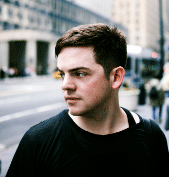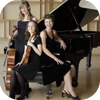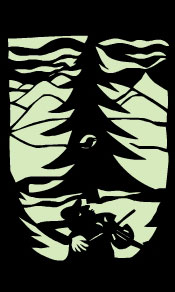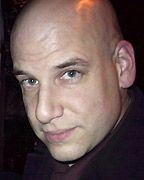
Brooklynite singer/songwriter Elizabeth Ziman is probably best known for her work with the indie pop band Elizabeth and the Catapult. But Ziman, a trained pianist who studied film scoring, was recently involved in composing music for a crossover “art song” project. The commission was premiered last Thursday at New Sounds Live, a concert hosted by John Schaefer at Merkin Hall in New York City. Elizabeth and the Catapult, Gabriel Kahane, and Ed Pastorini all appeared, performing new works that demonstrated their own particular takes on the ‘art song’ concept. After the gig, Elizabeth was kind enough to share some thoughts about creating crossover art songs at the behest of WNYC.
CC: How did you get involved with the New Sounds Live project? Have you been on the show in the past?
EZ: I first met John Schaefer when I was commissioned to write a piece for the Young People’s Choir of NYC about 5 years ago, and ever since he’s been really super supportive of all Elizabeth and The Catapult ventures- he’s featured us on Soundcheck a number of times. But this was our first appearance on New Sounds. We were all very excited.
CC: Tell us about the commissioned work that premiered at the Merkin Hall event.
EZ: Around the time John gave me the assignment to write the song cycle, I was reading a book of poems Leonard Cohen wrote while spending time in a Zen monastery in California: “Leonard Cohen’s Book of Longing”. The general theme of these poems are not so much about religion/sex/depression/politics as is per usual with him, but more personal- mostly about being human and flawed and trying to succumb to it. He’s constantly searches for peace but when he can’t reach it, he laughs at himself. So there’s a good dark humor to the poems. Something about this really struck a chord with me and ended up writing my own poems mirroring this sentiment. Musically speaking, it was just the normal setup plus string quartet.
CC: Merkin Hall is generally known as a classical and jazz venue. Has Elizabeth and the Catapult performed in similar halls in the past?
EZ: We performed at Carnegie Hall two years ago; otherwise the closest thing to Merkin Hall we’ve played is probably a club like Joe’s Pub in the Village. But we welcome all theatre/art spaces- they usually sound the best anyway.
CC: The concept for this New Sounds program was showing how ‘art songs’ – songs in the concert music tradition – are being affected by influences of pop, jazz, and other kinds of music. How did you respond to this?
EZ: I really just tried to do exactly what I do – but because there was some kind of budget I was lucky enough to be able to hire a string quartet for the occasion as well.
[youtube]http://www.youtube.com/watch?v=V-Ved2Jq4Yk[/youtube]
CC: A lot of indie pop artists seem increasingly interested in incorporating classical influences into their work. Conversely, classical artists are blending pop influences into their compositions. Can you comment on this trend and how, if at all, it affects your songwriting and arranging?
EZ: I went to school for film scoring- so I’ve always been very interested in arranging cinematically, and using a broader scope of instruments- but I feel like bands like Sufjan, The Dirty Projectors, David Byrne, St Vincent and Antony and the Johnsons(to name a few) have been really pushing the envelope with their arrangements in a very hip way.
CC: How did your approach the ‘art song’ compared to the other artists > on the show – Gabriel Kahane and Ed Pastorini? Was there any communication about the music you were composing ahead of time?
EZ: I love Gabe, I actually wrote one of the songs for the cycle on his piano at his house while he was on tour and I was house-sitting! But no, the night was pretty much a happy surprise for all of us.
CC: Is this type of project something you’d like to explore further with Elizabeth and the Catapult?
EZ: Sure, it was an absolute honor to perform in such a beautiful venue for such a great program. I’m always psyched to be involved in new random projects, especially those being sponsored by NPR.
CC: What’s next for Elizabeth and the Catapult? Are you touring/recording this summer?
EZ: We’re recording this summer and hopefully touring very, very soon!
Those interested in hearing the Merkin Hall concert, stay tuned! It will be broadcast as part of a future New Sounds program on WNYC.














